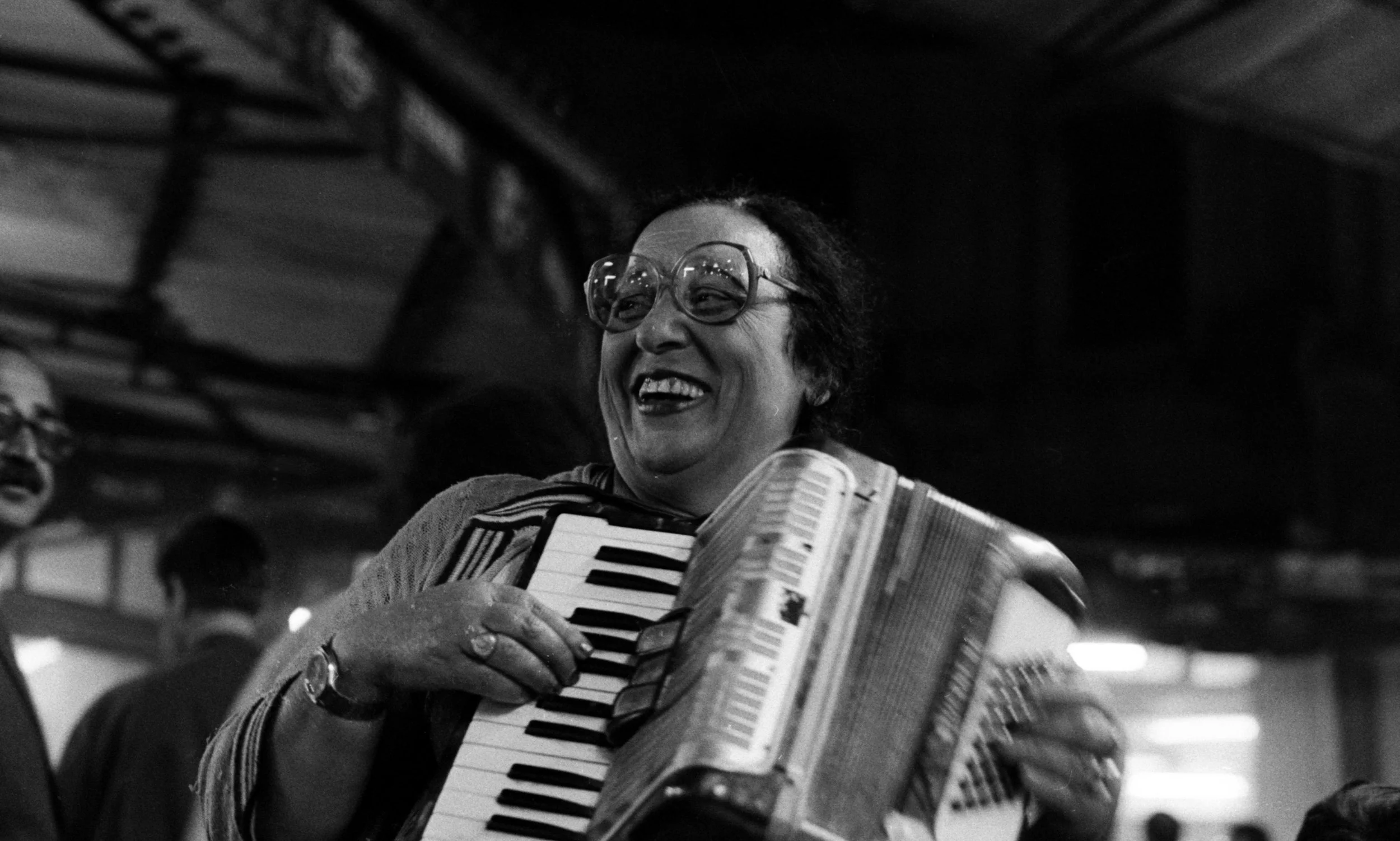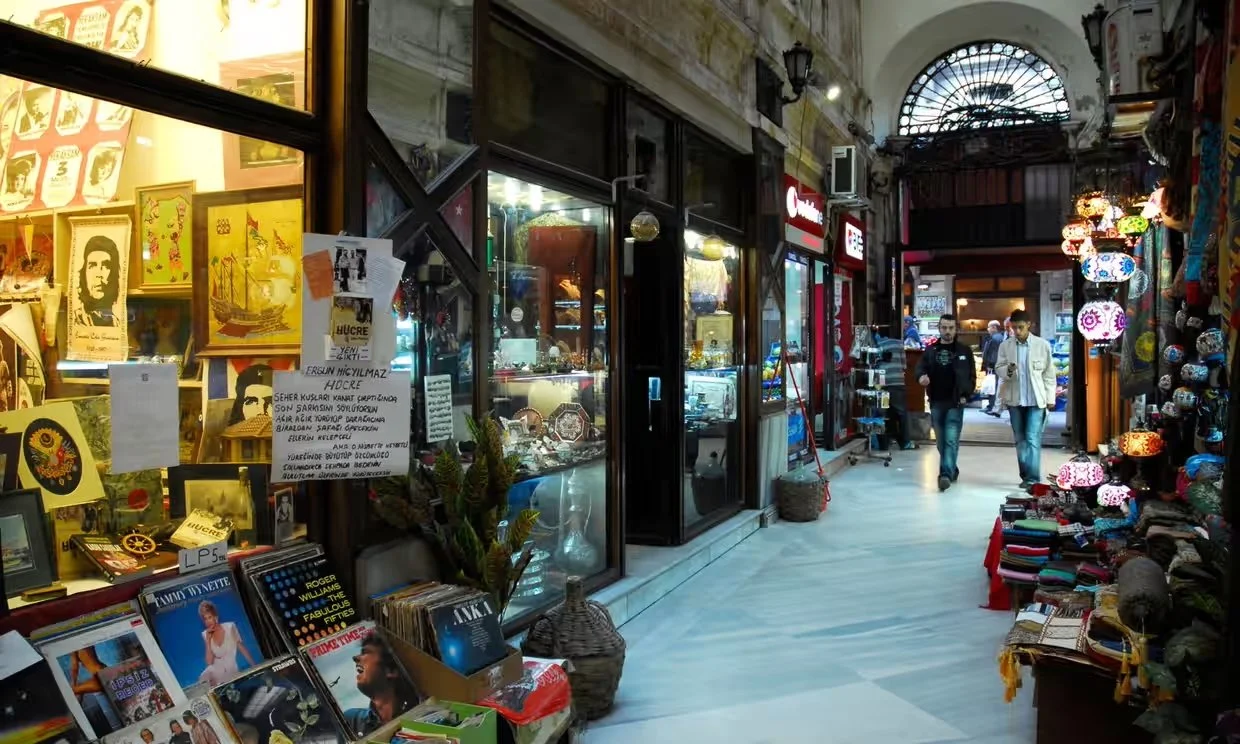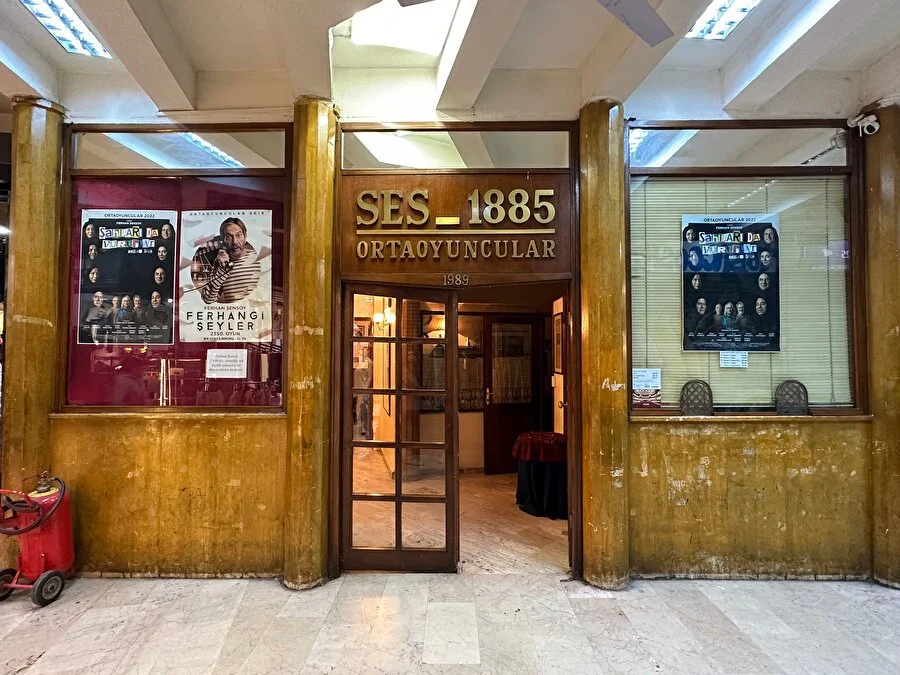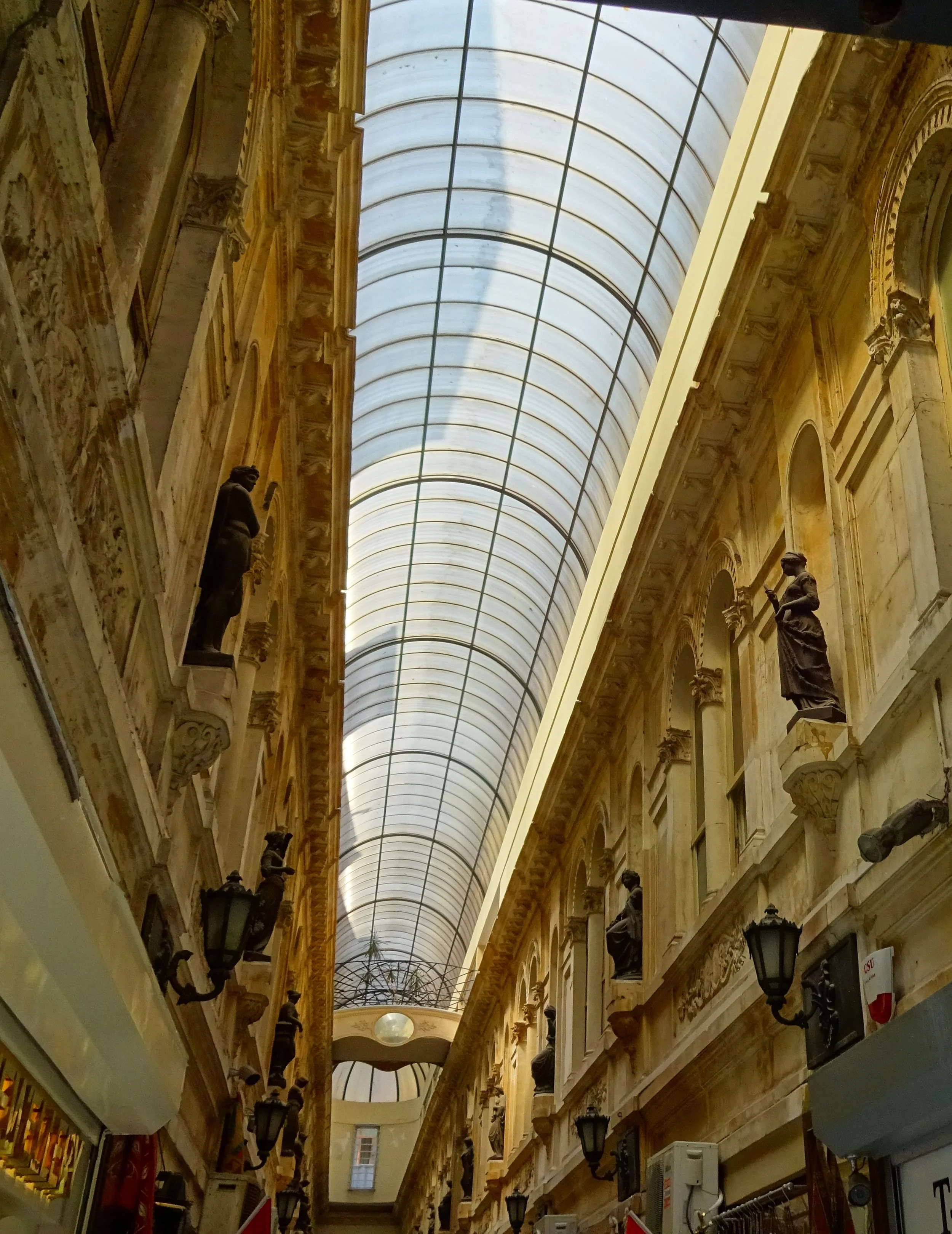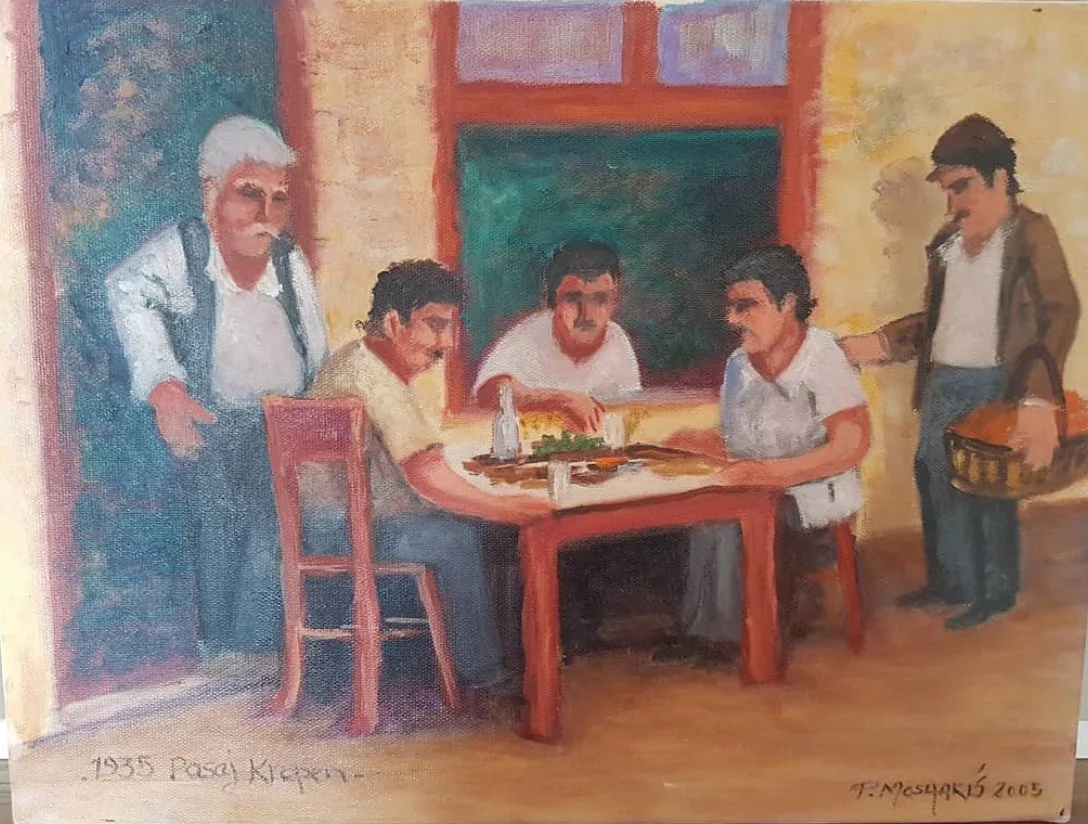Istanbul’s Arcades: Spaces of Throwntogetherness*
The arcades of Istanbul are not merely historic architecture; they are layered expressions of a city's shared memory—spaces of throwntogetherness*.
These corridors once linked not only shops, but also languages, faiths, and generations. Built largely by Greek, Armenian, and Jewish families, they shaped the city’s cosmopolitan fabric—until waves of state-sanctioned dispossession, from the 1920s population exchange to the 1950s pogroms, hollowed out the communities that sustained them. Merchants like Malaksotis, or tailors such as Foskolo, held together more than trade. And though much was lost, the arcades remain: layered spaces where collective memory resists forgetting, and the city’s plural past still lingers.
In-Between Spaces
The arcades of Istanbul are neither streets nor rooms—spaces not wholly inside, yet not entirely outside. They are seasonless corridors: dry in rain, cool in summer, sheltered from traffic, yet animated by footsteps. From ancient agoras and Ottoman arastas to cast-iron arcades, such spaces have long choreographed the city’s rhythms of buying, pausing, meeting, and remembering.
Çiçek Pasajı (1876)
Before becoming one of İstiklal Street’s most iconic landmarks, the site once held the Hristaki Passage—built by the Zografos family, prominent palace suppliers and founders of Zografyon Greek High School. That structure was destroyed in the 1870 Beyoğlu fire. The current arcade, designed by Cleanthe Zanno, was completed in 1875 with 18 apartments and 24 shops. In the 1930s the shops filled with florists—giving the passage its current name. By the 1940s, flowers gave way to methanes and pubs, and today the arcade stands as a carefully restored monument to Istanbul’s layered transformations.
Hazzopulo Pasajı (1871)
Though its exact patron remains uncertain, the passage is often attributed to Yorgo Zarifi Hacopulo, a notable Galata banker, and opened in 1871 as a neoclassical–Renaissance arcade. It became home to elite Greek and Armenian tailors, fabric dealers, and Istanbul’s first silk haberdasheries. In the 1870s, the upper floors hosted Adam Music Shop, later transformed by Dikran Çuhacıyan into an early opera studio and concert space—where Istanbul’s first chamber ensemble performed. The passage also housed the İbret newspaper offices, published by Ahmed Midhat Efendi and Namık Kemal.
Suriye Pasajı (1901)
Constructed between 1901–1908 by Syrian‑Palestinian Hasan Halbuni Pasha and Mehmet Abbud Pasha, designed by Demetre Bassiladis. Featuring 36 shops and 42 flats, it housed one of Istanbul’s earliest cinemas (Santral Sineması, 1911), and was among the first buildings in Beyoğlu to have electricity and gas after the Ottoman palaces.
Atlas Pasajı (1877)
Constructed in 1877 in French Renaissance style as Agop Köçeyan’s winter residence. From 19 February 1948 it hosted Atlas Sineması (1,860 seats); in 1951 it added the Küçük Sahne stage. Recently restored (2019–21), it now houses both the cinema and the Istanbul Cinema Museum.
Akmar Pasajı (1982)
Located in Kadıköy on Istanbul’s Asian side, Akmar Pasajı became a countercultural hub in the late 1980s and throughout the 1990s. A space of youthful rebellion, it hosted pirated cassette stalls, metal-band T‑shirts, independent publishers, and Kurdish political musicians—especially amidst the post‑coup atmosphere. Described as the “most distinctive example of ‘pasaj’ culture,” it drew music enthusiasts, activists, and free thinkers. Akmar embodied a rebellious sense of belonging and resistance to mainstream silencing.
Aznavur Pasajı (1893)
Designed by Armenian architect Hovsep Aznavur in 1893, this narrow arcade once connected İstiklal to Tepebaşı. With its Art Nouveau details, it housed chemists, ateliers, and independent printers. Today, it's a passage of quiet resilience—lined with retro fashion, handmade objects, and echoes of Istanbul’s small-scale creative lifeblood.
Halep Pasajı (1885)
Once known as Cirque de Pera, Halep Pasajı began with acrobatic shows and later became home to photo studios, piano shops, and one of Istanbul’s earliest bicycle dealers. Rebuilt after the 1904 fire, it remained a space for spectacle and exchange. Today, it houses the historic SES Tiyatrosu and the beloved Beyoğlu Sineması, where culture, memory, and everyday life continue to pass through.
Avrupa Pasajı (1874)
Built in 1874 by the Ohing family and designed by architect Pulgher, Avrupa Pasajı was inspired by the Burlington Arcade in London and arcades of Paris. Once the site of the famous Naum Theatre and a travelling circus, the arcade rose after the 1870 Pera fire with 22 elegant shops offering fine drapery, lace, and buttons. Today, it hosts the Aynalı Geçit cultural venue and remains a reflection of Ottoman-European elegance.
Krepen Pasajı (Late 19th c. – 1982)
Built in the late 1800s by the Levantine Crespin family, Krepen—later renamed Krizantem—once echoed with laughter, clinking glasses, and the scratch of poet’s pens. Its taverns—İmroz, Kadir’in Yeri, Triandafilos—drew the city’s literary crowd: Edip Cansever, Sait Faik, Melih Cevdet, Cahit Külebi. In a smoky corner, Cansever first imagined Ruhi Bey. Demolished in 1982, its memory survives in meyhanes reborn in Nevizade—still calling themselves “Krepen’deki…”.
Aslıhan Pasajı (1960s – today)
Tucked beneath İstiklal Avenue, Aslıhan has been Beyoğlu’s intellectual refuge since the 1960s. With over thirty sahaf (second-hand booksellers), it offered everything from rare Ottoman texts to banned political theory. In the 1980s and 90s, it quietly sustained cultural dissent—socialist manifestos, Kurdish poetry, forgotten novels. Today, it remains a tactile memory space—dusty, dense, and defiantly analogue.
And Many More
Some arcades remain just beyond the frame— Markiz still flickers with the glow of its tiled pâtisserie. Elhamra recalls the glamour of Republican theatre and film. Reasürans rests quietly in Nişantaşı, modernist and composed. Terkos hums with the urgency of street fashion. Tokatlıyan lingers in the shadow of a vanished hotel.
“When, as children, we were made a present of those great encyclopedic works... Yet this same strange rapport and primordial relatedness is revealed in the landscape of an arcade.”
— Walter Benjamin, The Arcades Project
Walk these spaces and you read Istanbul as it once was, and perhaps, what it might yet become.
#scrollslowtuesday
Throwntogetherness* is a term created by cultural geographer Doreen Massey and it means—urban spaces where difference meets, co-exists, collides.
Sources:
▫️Salt Research Archives, Various portraits from Çiçek Passage by Ali Öz, Kayıhan Türköz photo archives, Yula Kabaş archives
▫️Hakikate Adalet Hafiza Merkezi A City that Remembers project
▫️Arkitekt, Uluç Algan
▫️Creative Commons, Bensreis
▫️1935 Krepen Pasajı by Pavlis Moshakis
▫️Gazete Kadıköy, Murat Beşer
▫️Rakı Ansiklopedisi

